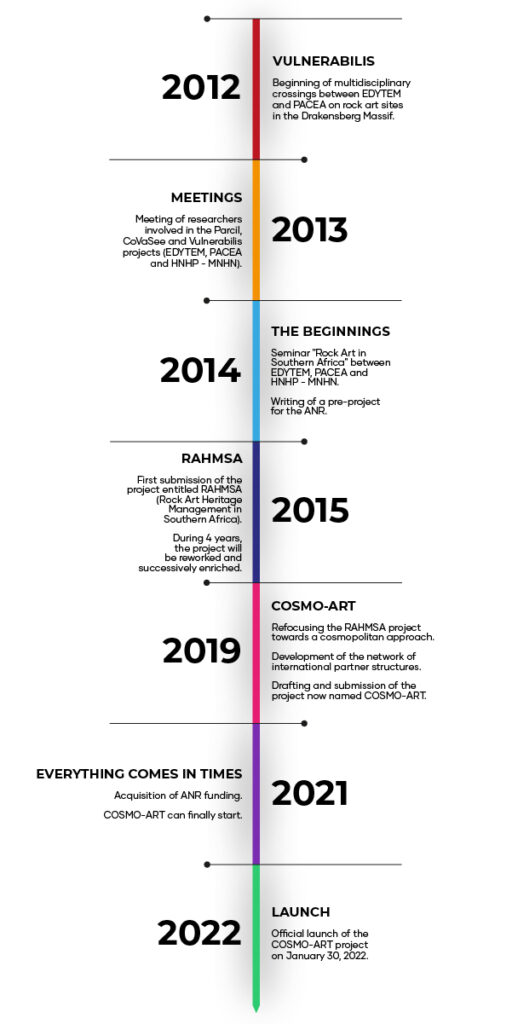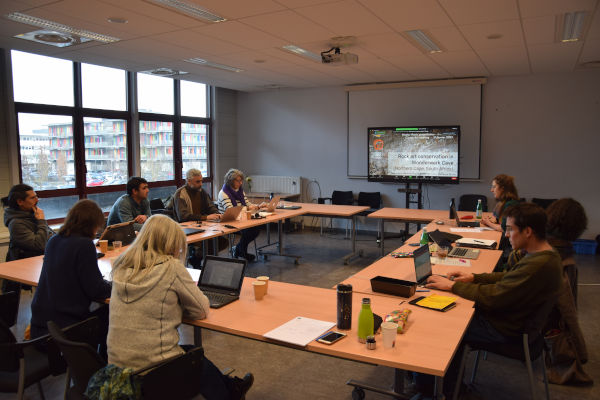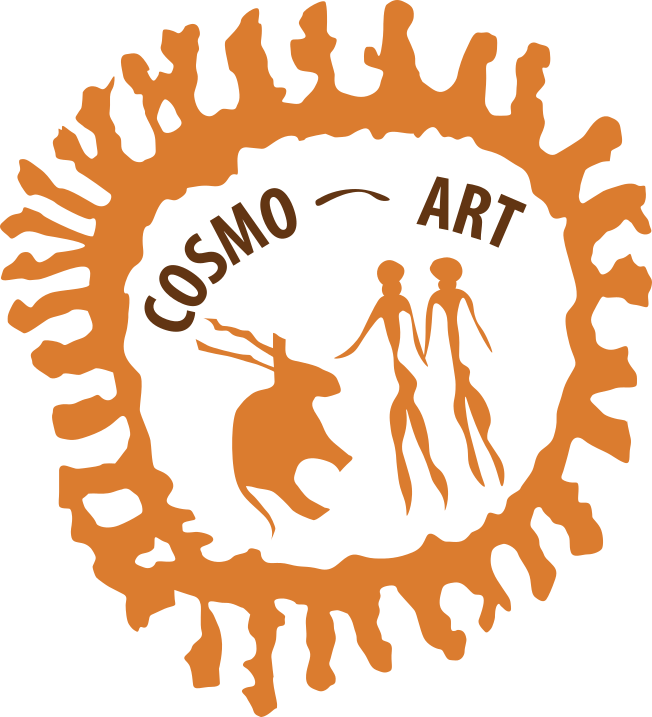The Project
COSMO-ART proposes to develop a new approach to rock art management
COSMO-ART aims to develop a strong, holistic and integrated methodological framework to improve the sustainable management of rock art heritage and to provide decision-making tools for heritage authorities. The cultural heritage management framework has shifted from a focus on the conservation of physical sites to the management of the values that underpin their significance, but the implementation of this values-based approach faces challenges where there is cultural and population diversity. COSMO-ART will address these challenges with a Cosmopolitan Approach to identify cross-cultural points of interest for sustainable rock art management. The consortium, with its diverse scientific expertise and cultural backgrounds, ensures the success of this approach. The method is being tested in two areas (Erongo, Namibia; Kimberley, South Africa) and improved with data integration and participatory tools. The ultimate goal is to contribute to the renewal of heritage management methodology and its applications.
Hypothesis, positioning and objectives
COSMO-ART is the continuation of several research projects. It is the result of meetings between researchers and partners from different institutions and countries. This timeline shows the main milestones that have structured the set-up of this project.

Rock art, a graphic manifestation on static rock supports and a testimony to the creativity of the Homo genus, covers a wide chronological range, from prehistoric to modern or even contemporary, and a wide spatial distribution all over the world. The issues involved in its conservation and management are particularly complex, with several value systems overlapping, including "traditional" and "official" systems. In developing integrated and sustainable management plans for rock art heritage, the current challenge is to renew our understanding of the values attributed to rock art sites.
COSMO-ART aims to explore the challenges of rock art management in southern Africa. In this region, heritage practices tend to remain Western-inspired and, as a result, heritage policies rarely take into account local perspectives on objects, places and knowledge to which people may attach symbolic or identity value. This project aims to address a number of questions: Who are the users of the sites and to what scale? What values are attributed to rock art and by whom? How are these values used, possibly adapted, and communicated through dissemination activities (from education to tourism development)? What value systems are drawn upon and legitimised by the construction of Heritage Authorised Discourses? What are the perceptions of the vulnerabilities of these sites? How do Western-inspired conservation measures and traditional systems of custodianship work together? A generation after the end of Apartheid, what does "rock art heritage" mean to all stakeholders?
COSMO-ART has also applied goals and seeks to develop a strong holistic and integrated methodological framework to improve the sustainable management and development of rock art heritage and to provide useful decision-making tools for heritage authorities. Indeed, the overarching management framework for cultural heritage has gradually shifted from a focus on the conservation of the physical fabric of sites to the management of the values that underpin heritage significance. While this values-based heritage management is now almost universal, aspects of its implementation are being challenged, particularly where cultural and population diversity generate mixed and sometimes conflicting value systems. In such contexts, values-based approaches reach their limits and fail to provide the robust framework necessary for effective management. The result is the ultimate failure of many development projects, with ensuing disillusionment and resentment. This is particularly true of rock art in southern Africa. Although recent management approaches have attempted to take into account the diversity of values attributed to rock art, there remains a gap between intention and implementation. This is largely due to the difficulty of grasping multifaceted, contextual, conflicting and ever-changing values.
COSMO-ART aims to address this methodological deficiency by implementing a Cosmopolitan Approach to identifying cross-cultural and interacting points of interest, which we argue is the cornerstone of a pacified and sustainable rock art management process. The ultimate aim is to propose an effective tool for rock art managers and developers to help them design sustainable solutions that avoid the pitfalls of classical value-based approaches. This satisfies a widely shared desire to make the results of heritage science accessible to those who need it in their daily lives. This imperative of sustainable management is all the more important in southern Africa, where expectations of economic development and empowerment are high, especially in the remote and rural areas where most rock art sites are located.
The fundamental critique of heritage-making processes at the heart of COSMO-ART requires a reflexive approach. Researchers are indeed also stakeholders in the phenomena they study and are likely to influence them. This critical and reflexive stance towards our own practices and positioning as researchers permeates the entire project.
Moving beyond radical categorisations
Working with the values attributed to rock art sites or other heritage objects requires a deconstruction of the notion of "heritage" and a detailed examination of what constitutes significance for the various stakeholders. Assessing the values attributed to a place of heritage is, however, a difficult exercise due to the diversity of value types and their inherently contested and changing nature. In post-colonial contexts such as Africa, the consideration of heritage values through stakeholder analysis often juxtaposes the values of those working in heritage institutions with those of "local communities". In addition to the difficulties associated with identifying and defining "local communities", this type of approach tends to stereotype stakeholders by category. Typically, those working in heritage institutions are stereotyped as emphasising materialistic, tangible and preservationist values, and "local communities" are seen as emphasising spiritual, intangible and living heritage values. This reductive approach does not hold up in the face of real-world dynamics, which instead reveal multiple hybridised values that do not fit neatly into any scale of analysis.
The aim of COSMO-ART is to provide a cross-cultural method that can produce a set of value categories that are recognised as relevant by all local stakeholders and in all contexts. While such a method must by definition produce locally specific categories, the process should be transferable to other rock art sites, other archaeological sites, and more generally to other cultural heritage sites. We do this in order to overcome the problem of imposing the familiar and universal existing categorisation of heritage values (aesthetic, historical, scientific, social or spiritual value) which, although intended to be cross-cultural, has emerged from a predominantly Western discourse. Our approach to cosmopolitanism is inspired by the work of A. Appiah and L. Meskell, who advocate a philosophy of being, in our case an approach to heritage, that emphasises mutual points of contact arising from a common humanity. We chose this kind of cosmopolitan approach not only because we feel it is contextually appropriate in post-colonial southern Africa, but also because it moves us beyond the traditional binaries of "us" and "them", "white" and "black", "managers" and "communities". We have also chosen this type of approach because we argue that it allows management plans to be developed around a consensus on management objectives.
Scientific productions and meetings
We have decided to diversify the types of outputs in order to better demonstrate the interest and effectiveness of the project to both academics and heritage practitioners, aiming for a high level of local input. In addition to traditional scientific production, we also disseminate our results to local communities and authorities. Indeed, one of the aims of COSMO-ART is to produce recommendations of direct use and applicability to rock art managers.
The implementation of a Cosmopolitan Approach requires that several fieldwork sessions be carried out jointly by several members of the consortium, in a co-creation process involving the various users of rock art sites. In addition to data collection, such an organisation of fieldwork provides an opportunity to organise co-creation sessions and to give feedback on the research results so that they can be validated by all stakeholders. Indeed, it is through such strong engagement with civil society that research can achieve its transformative role. These informal exchanges are complemented by regional workshops to collectively discuss participants' different standpoints on rock art sites. These exchanges are designed to ensure that participants feel free to express their views.


Studied sites
The aim of COSMO-ART is to extend the Cosmopolitan Approach to two new areas: the rock art sites in the Kimberley region (South Africa) and those in the Erongo Mountains (Namibia), and even more to develop and strengthen this approach by establishing the Cosmopolitan Approach as a line of conduct that precedes all research actions. COSMO-ART proposes to compare rock art sites developed for tourism but with different research histories and socio-economic contexts. The areas of Kimberley (Northern Cape, South Africa) and the ≠Gaingu Conservancy (Erongo, Namibia) offer such sites. Both regions have a rich rock art heritage that is characterised by
In short, both regions accumulate rock art management and development issues that we propose to address through a cosmopolitan approach.
